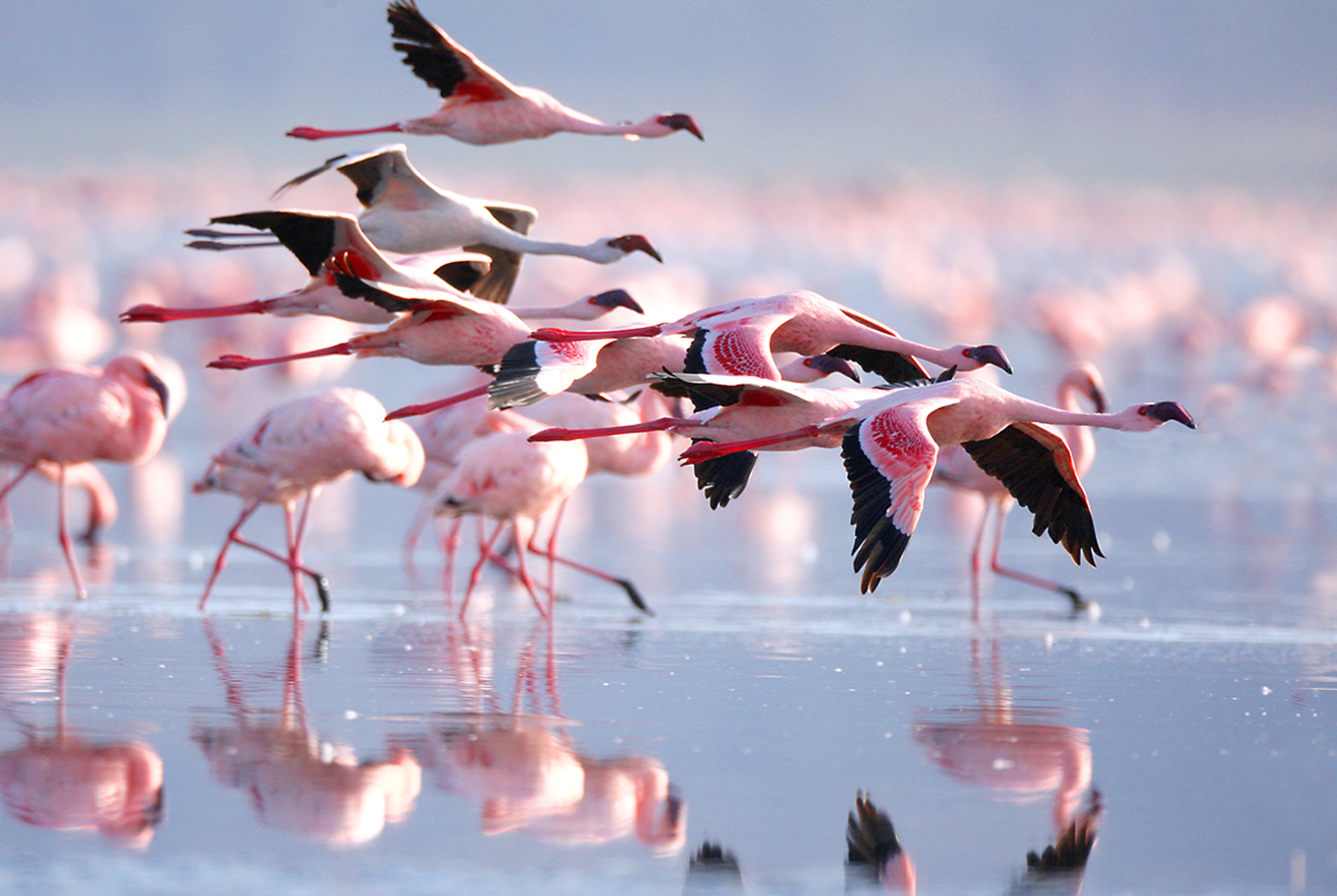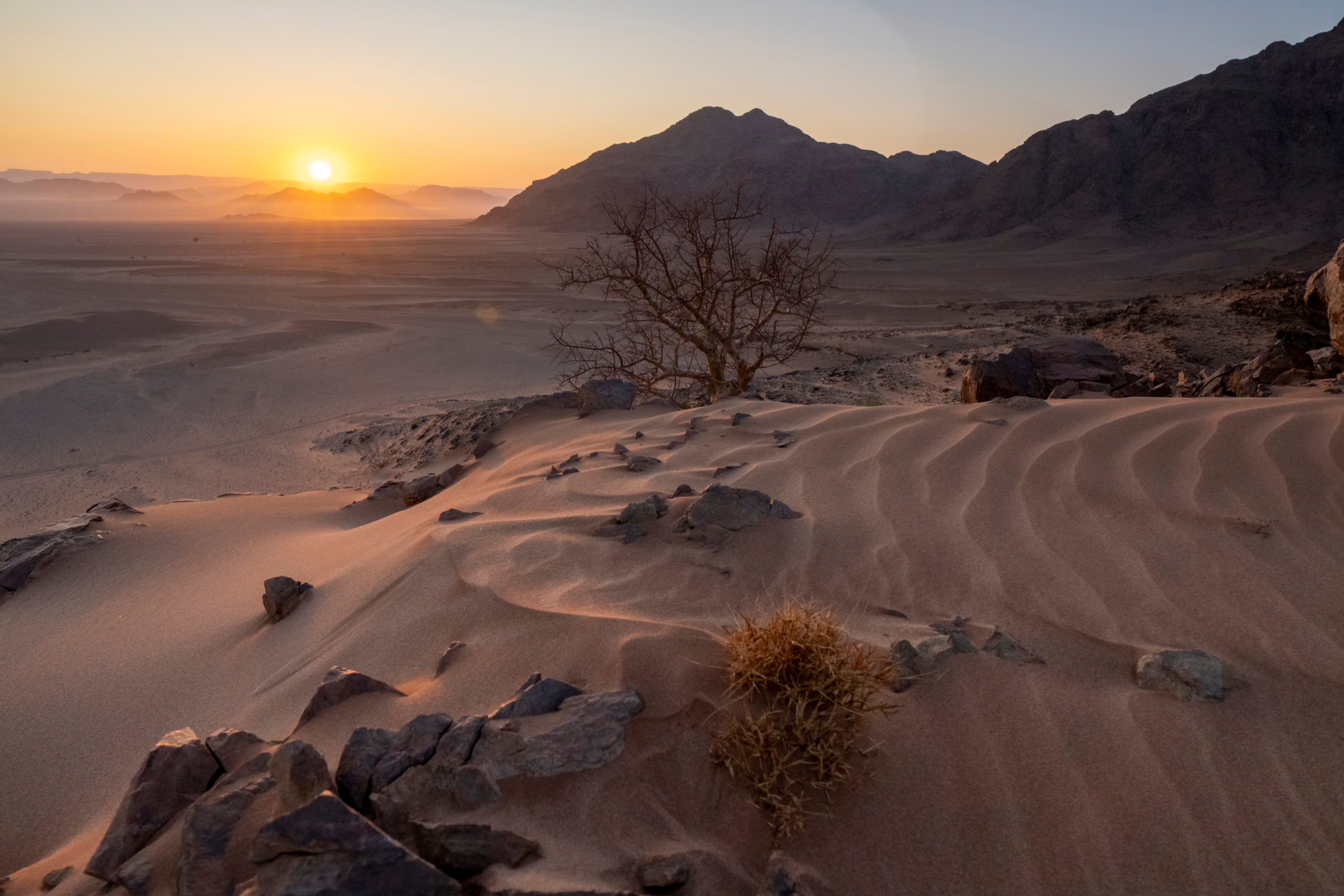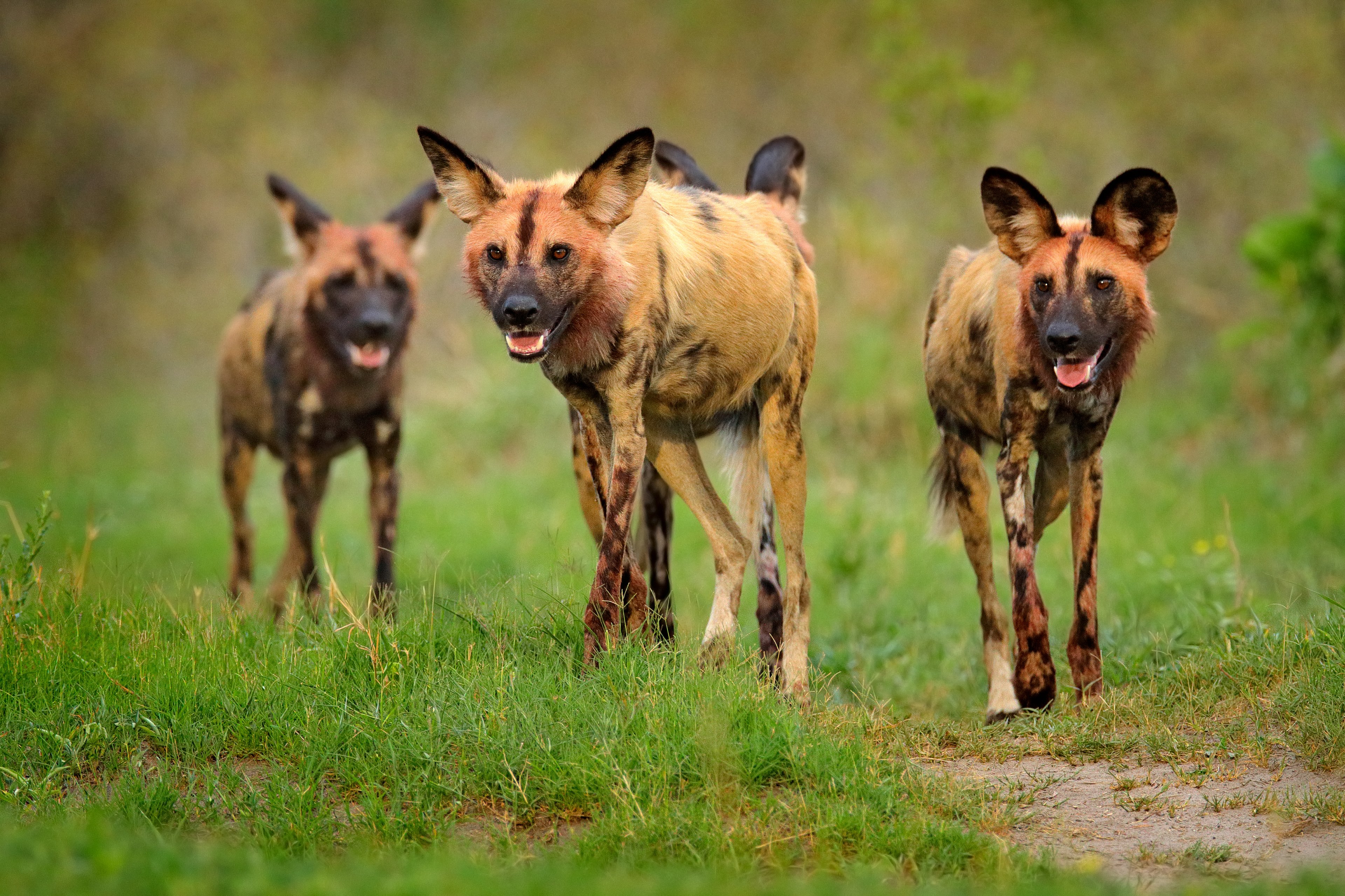Growing up in the African bush ensured that I was wholly acquainted with all forms of wildlife from an early age, yet birding was never my forte. Although I was aware of the epic trans-continental migration journeys that birds undertook annually, I was always more fascinated with where flight could take me. As hard as it was to conceive of these migratory journeys, they were an incredible inspiration.
Birth of a twitcher
But then while on a game drive at Xigera in Botswana with master guide Ike Mogalakwe, I became a birder. I remember the day clearly, we were hardly out of camp when Ike spotted a Montagu’s harrier – the elegant, long-tailed raptor – sitting above us on a tree. “He's just arrived from his breeding grounds in Europe,” said Ike.
Having just flown into Africa, I suddenly saw this majestic bird with new eyes. “How long would it have taken him?” I asked in awe. “Oh, anything from 10 to 30 days,” he replied. “Who knows which way he came. It could have been via the Strait of Gibraltar in Spain, Italy to Tunisia or even Greece.” The enormity of such a journey hit home. How was it that I’d seldom considered the distances that birds travel as part of their migratory patterns?
Ancient wild ways
Of the more than 1 800 bird species found in sub-Saharan Africa, around 180 species migrate seasonally between the Palearctic (Europe and Asia) and Afrotropical (sub-Saharan Africa) regions. Another 50 or more migrate between the Americas, Australasia, Antarctica and the oceanic islands. The avian migratory paths that fan out from northern Europe to the Rift Valley, from Syria to central Mozambique and down to the tip of Africa, echo other long-distance migrations that have been a part of larger animal behavior on the continent too.
Just a hundred years ago, millions of elephants roamed vast swathes of Africa and thrived thanks to this mobility. But as the continent filled up with borders and wildlands were fenced off, Africa’s great migrations experienced a sharp decline. This means that today, the world’s last remaining borderless mass migration is that of birds.
Cue Apeirogon, the epic tale and New York Times bestseller by Colum McCann, in which birds and migration are a central metaphor. Page two sums up the wonder of it perfectly: “Every year by ancient tapestry, five hundred million birds arc the sky over the hills of Beit Jala: hoopoes, thrushes, flycatchers, warblers, cuckoos, starlings, shrikes, ruffs, northern wheatears, plovers, sunbirds, swifts, sparrows, nightjars, owls, gulls, hawks, eagles, kites, cranes, buzzards, sandpipers, pelicans, flamingos, storks, pied bushchats, griffon vultures, European rollers, Arabian babblers, bee-eaters, turtle doves, whitethroats, yellow wagtails, blackcaps, red-throated pipits, little bitterns. It's the world’s second busiest migratory superhighway: at least four hundred species of birds torrent through here, riding different levels in the sky. Long vees of honking intent. Solo travelers skimming low over the grass.” What an incredible description, not only of the magnitude and exoticism of avian migration but also of something that we humans have lost too – freedom of movement and a world without borders.
Miracles of migration
Travel in Africa leaves no room for complacency. While the desire to see the Big Five on your first trip is often easily achieved, it’s the multitude of smaller marvels that keep you coming back for more. The genius of bird migration is one of them, for no matter their size or wingspan, all migratory birds are extraordinary endurance athletes with the ability to undergo extreme physiological changes in preparation for their journeys.
While some migrate at night (flamingos, cuckoos, flycatchers, warblers, thrushes and sparrows) to avoid predators, others load up on fats or temporarily supersize their digestive systems only to shrink them during flight and then regenerate them when they’ve arrived at their destination. Others can rest alternate hemispheres of their brains for a few seconds at a time whilst flying. But what unites them all is the extreme precision with which they navigate their way, using sight, smell, the sun and stars, and an internal compass that helps them to follow the earth’s magnetic field.
The God of small things
Take the willow warbler, a tiny songbird weighing in at around nine grams, which does an 18 000-mile round trip between its breeding grounds in Europe and Russia to feed in South Africa. As does the European roller (a common sighting on game drives in southern and East Africa) which breeds in Europe and Asia before flying 6 000 miles to Africa. So too does the barn swallow from Eastern Europe and Asia, traveling more than 7 000 miles on a six-week journey to spend its winters in southern Africa. And the opportunistic common cuckoo which lays its eggs in host nests (and never meets its young) and then leaves its fledgling to embark upon migration south, relying solely on its ancient ancestry.
The cuckoo is also one of the furthest migrating land birds. According to scientific findings tracked via satellite tag, one bird’s journey of 7 500 miles from southern Africa to its breeding ground in Mongolia covered a staggering 2 000 miles of ocean and crossed some 16 countries in the process. Another marvel is the frigatebird, whose inability to dive beneath the water or even rest on its surface during long-haul transoceanic flights sees it rob other seabirds of food whilst flying. As its feathers are not waterproof, the risk of getting waterlogged and drowning is a determinant of these actions. At the same time, its reported ability to stay airborne for two months at a time is beyond comprehension.
Then there are the intra-African migrants, those birds that migrate within the flyways of the African continent, often coming to southern and eastern Africa from north of the equator and the tropics. These include the beautiful African paradise flycatcher, the spectacular southern carmine bee-eater, the electric blue-backed woodland kingfisher and the solitary Wahlberg’s eagle, to name a few.
My newfound interest in birds has led me to appreciate these wings of wonder, which – much like most other species – are in decline globally thanks to global warming, loss of habitat, high-voltage lines, light pollution, pesticides, drought, baited traps, poachers, helicopter blades, contaminated water, floods, heatwaves and war. But for the brief moments we have left on this planet I will watch in awe as they wing their way across borders, free from the hassles that we humans have put in their way and our own.




